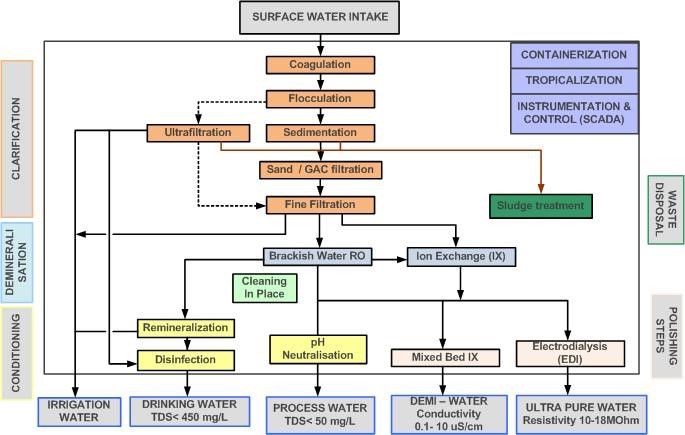The cost of water is on the rise and in some areas is not always available. As a result more and more industries and municipalities use treated surface water. Normally the surface water needs to be treated before it can be used most effectively. Surface water typically contains a high suspended solids content, bacteria, algae, organic matter, creating bad taste and odor. In some areas, like river estuaries, surface water can be brackish, reaching high TDS levels.
Two processes are commonly used to treat surface water:
– Conventional treatments including clarification (coagulation/flocculation, sedimentationor dissolved air flotation), sand filtration, activated carbon adsorption and disinfection.
– Advanced membrane treatments based on ultrafiltration technology.

Surface water treatment processes
Special attention is brought to disinfection since surface waters contain a wide range of coliforms (E.Coli), viruses and protozoa. The use of chlorine should be used with care since it reacts with natural organic matter to formdisinfection by-products like trihalomethanes.
Read more: http://www.lenntech.com/processes/surface/surface-water.htm#ixzz35CohaDSI
